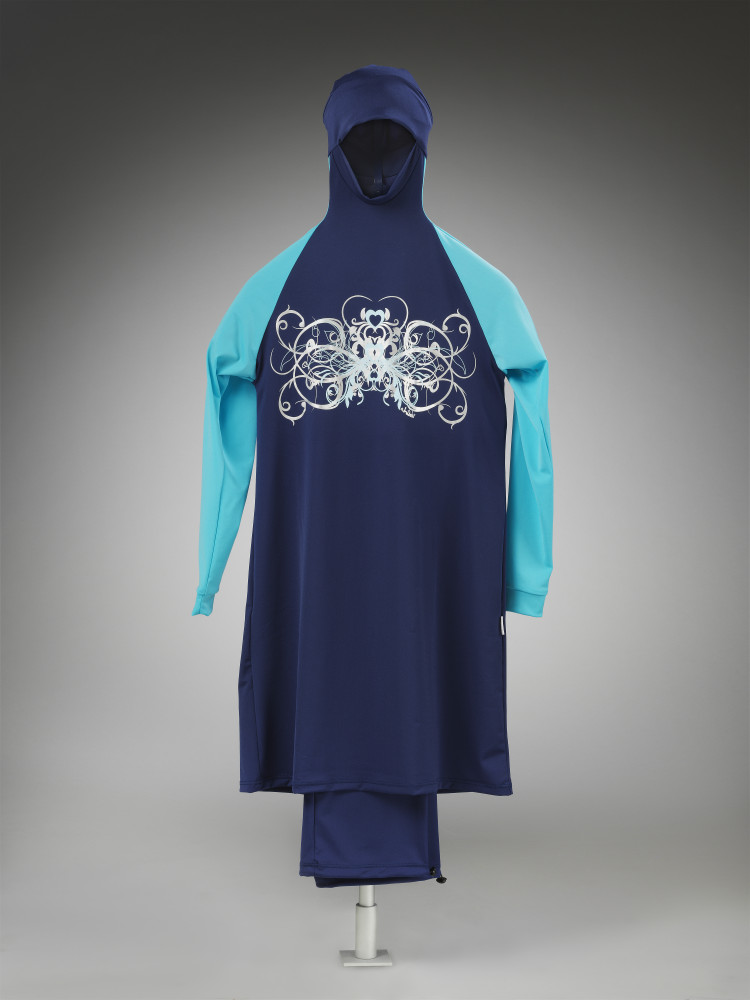V&A acquires a burkini for Rapid Response Collection

Yesterday, the V&A announced that it had acquired a burkini – a full-body swimming costume. The garment, first launched in 2004 to encourage Muslim women into sports, became a symbol of national identity politics in France this summer, as women were fined for, and in some cases banned from, wearing the garment in public.
Yesterday, the V&A announced that it had acquired a burkini – a full-body swimming costume. The garment, first launched in 2004 to encourage Muslim women into sports, became a symbol of national identity politics in France this summer, as women were fined for, and in some cases banned from, wearing the garment in public.
The burkini joins other timely acquisitions including a flag designed for the first ever Refugee team to compete in the 2016 Olympic Games, and a Vote Leave campaign leaflet distributed in the run-up to the UK’s referendum on European Union membership. All objects are now on display in the Museum’s regularly updated Rapid Response Collecting gallery exploring how current global events, political changes and pop cultural phenomena impact, or are influenced by, design, art, architecture and technology.
The Museum acquired the burkini from Melbourne-based fashion designer Aheda Zanetti. Zanetti invented the swimwear garment in 2004 through her brand Ahiida as a solution for Muslim women wanting to dress more modestly when participating in sport.
Image above: Ahiida Burkini, 2016 © Victoria and Albert Museum

